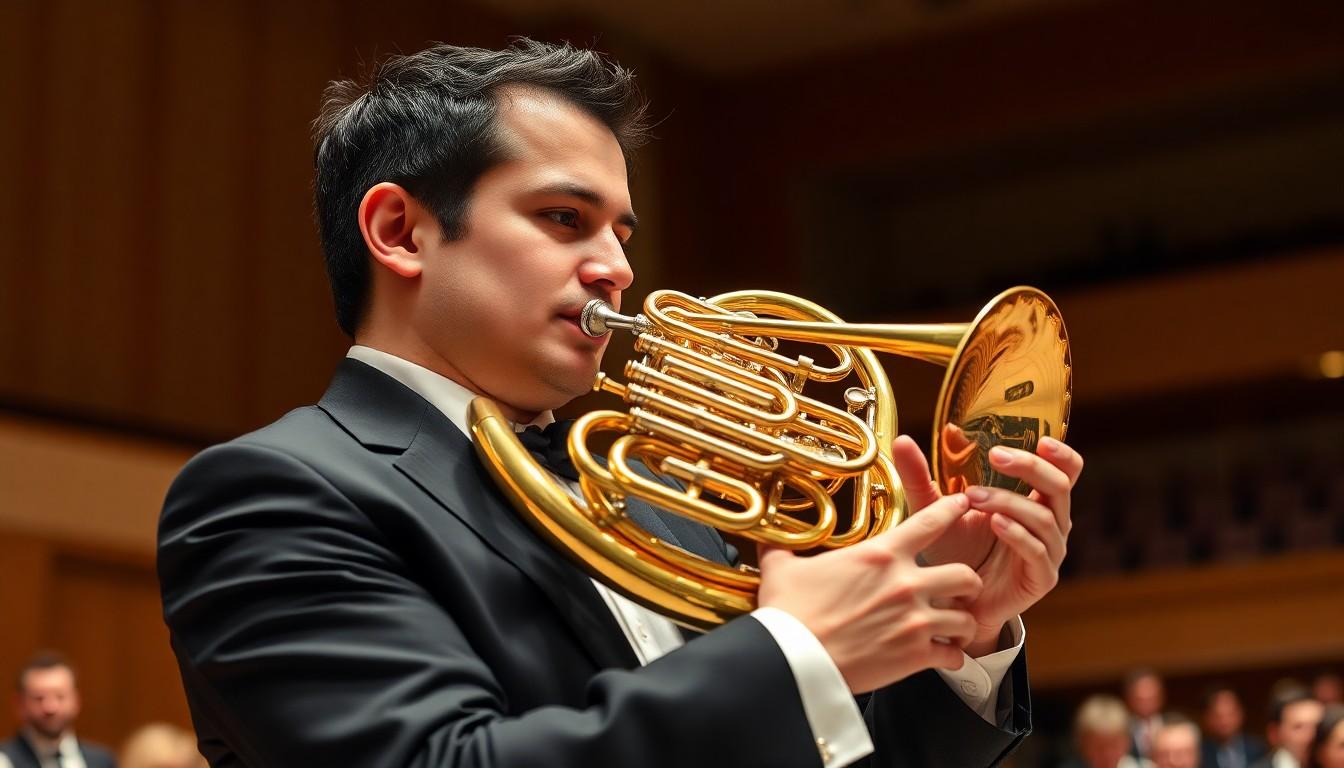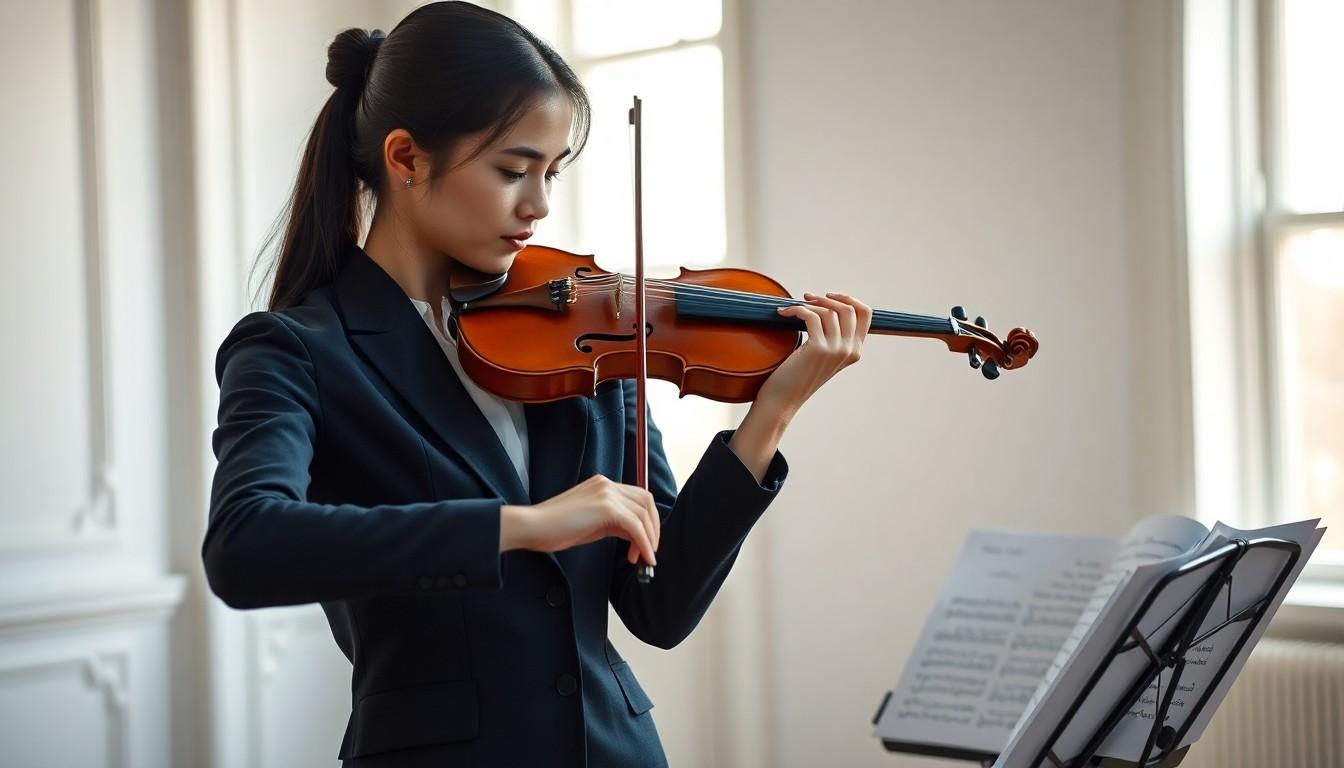Imagine picking up an instrument that makes even the most talented musicians raise an eyebrow. From the lightning-fast fingers required for the violin to the breath control demanded by the oboe, some instruments push skill to the limit. Whether you’re a budding musician looking for your next challenge or just fascinated by musical mastery, exploring the top 10 hardest instruments to play is both inspiring and entertaining. If you’re curious how technology is shaping music today, check out an AI music generator to see how artificial intelligence mimics—and sometimes rivals—human skill.
These instruments aren’t just about hitting the right notes—they demand precision, dedication, and a touch of perseverance. Dive into our list to uncover what makes each of these instruments a true test of talent and maybe even spark your next musical adventure.
10 Hardest Instruments to Play
The violin stands out among musical instruments due to its complexity and the skill required to master it. Musicians invest years honing their technique and expressive abilities.
Technical Challenges
Playing the violin demands precise finger placement on a small fretless fingerboard, requiring acute intonation control. Mastery of bowing techniques, such as spiccato and legato, is essential for producing varied tones. Vibrato adds emotional depth but takes extensive practice to execute smoothly. Rapid passages and complex rhythms challenge even seasoned players, necessitating exceptional dexterity and coordination. Reading intricate sheet music and interpreting dynamic markings further complicate performance. Additionally, maintaining posture and hand positioning prevents strain, ensuring longevity in practice and performance. The absence of frets means players must develop an internal sense of pitch, making accurate note production difficult. Ensemble playing adds another layer of complexity, as synchronizing with other musicians demands sharp listening skills and adaptability. These technical hurdles make the violin one of the most challenging instruments to master.
Physical Demands
Violinists endure significant physical strain while playing, affecting both upper and lower body. Holding the instrument requires strong shoulder and arm muscles to support its weight without causing fatigue. Left-hand dexterity is crucial for rapid finger movements and precise shifts between positions. Extended practice sessions can lead to repetitive strain injuries, such as tendonitis or carpal tunnel syndrome, if proper technique and breaks are not maintained. Bowing involves complex wrist and forearm movements, demanding endurance and control to sustain long performances. Neck and back muscles must remain stable to maintain correct posture, preventing discomfort and injury over time. Additionally, breath control plays a role in maintaining steady bowing and dynamic expression. Balancing these physical requirements with mental focus and emotional expression makes playing the violin exceptionally demanding.
French Horn

The French horn presents unique challenges that demand exceptional skill and precision. Mastering this instrument involves overcoming intricate technical and physical obstacles.
Embouchure Control
Playing the French horn requires precise embouchure control to maintain a consistent and stable tone. Musicians manage lip tension and aperture size effectively to produce accurate pitches across various dynamics. Adjusting the embouchure subtly allows for smooth transitions between notes, especially when navigating the horn’s extensive range. Consistent practice develops the necessary facial muscle strength and coordination, enabling players to execute rapid changes and sustain high-quality sound. Embouchure flexibility is crucial for handling the instrument’s demanding passages and ensuring tonal consistency throughout performances. This level of control distinguishes proficient horn players from novices, highlighting the instrument’s complexity.
Range and Flexibility
The French horn boasts a wide range, typically spanning from F♯ below middle C to C above high C, requiring significant range and flexibility from players. Navigating this spectrum involves mastering precise valve techniques and fingerings to access higher and lower registers seamlessly. The instrument’s partials and overtones demand accurate intonation, especially during rapid passages and dynamic shifts. Players develop agility to switch between notes swiftly, maintaining clarity and precision across the entire range. Flexibility in playing both legato and staccato articulations ensures expressive performances. The extensive range and required technical adaptability make the French horn one of the most challenging instruments to master.
Piano
Playing the piano demands high levels of skill and dedication. It stands out for its intricate coordination and extensive repertoire.
Coordination and Independence
Pianists execute both hands performing distinct roles simultaneously. The left hand typically handles bass lines or accompaniment patterns, while the right hand manages melodies and harmonies. This separation requires precise timing and synchronization. Developing hand independence involves practicing scales, arpeggios, and complex finger exercises. Advanced pieces may feature contrasting rhythms or dynamics between hands, increasing the challenge. Consistent training enhances motor skills and cognitive processing, enabling seamless performance. Mastery of coordination and independence is essential for tackling the piano’s technical demands.
Complexity of Repertoire
The piano’s repertoire spans a wide range of difficulty levels and styles. Classical compositions like Rachmaninoff’s “Piano Concerto No. 3” demand exceptional technical prowess. Jazz and contemporary pieces incorporate intricate rhythms, syncopations, and extended harmonies. Mastering these works involves understanding complex sheet music and nuanced interpretations. Advanced repertoire often includes rapid passages, dynamic contrasts, and diverse expressive techniques. Musicians must invest considerable time in practice to navigate these complexities effectively. The diverse and challenging repertoire continuously pushes pianists to refine their skills.
Organ
The organ stands as one of the most complex and demanding instruments to master. Its intricate mechanics and extensive range require exceptional skill and dedication from musicians.
Manual and Pedal Coordination
Organists manage multiple keyboards, known as manuals, alongside a pedalboard. Each manual controls different sets of pipes, demanding precise hand coordination. Playing with both hands and feet simultaneously challenges motor skills and spatial awareness. Musicians must seamlessly switch between manuals to achieve dynamic variations and intricate harmonies. Additionally, the pedalboard extends the instrument’s range, requiring foot dexterity to play basslines while maintaining harmony with the manuals. Effective coordination ensures fluid performance, allowing organists to navigate complex compositions effortlessly.
Repertoire Demands
The organ repertoire spans centuries, featuring works from Baroque to contemporary composers. Pieces like J.S. Bach’s “Toccata and Fugue in D minor” showcase technical brilliance and interpretative depth. Modern compositions may incorporate unconventional techniques and extended ranges, pushing the limits of the instrument. Organists must master diverse styles, from intricate counterpoint to rich, sustained harmonies. Understanding historical contexts and stylistic nuances is essential for authentic performances. The vast and varied repertoire demands continuous learning and adaptability, ensuring organists remain proficient across different musical periods and genres.
Oboe
The oboe stands out for its demanding technical and physical requirements. Mastering this instrument involves overcoming significant challenges related to breath control and double reed technique.
Breath Control
Consistent breath control is essential for oboe players to sustain clear, stable tones. Musicians must regulate airflow precisely to manage the instrument’s resistance. Efficient breathing techniques allow for longer phrases and dynamic expression, minimizing fatigue during performances. Oboists engage in regular breathing exercises to enhance lung capacity and control. Proper breath management supports the intricate articulations and rapid passages typical in oboe repertoire. Maintaining steady airflow ensures tonal consistency across the instrument’s range, from its rich lower register to its piercing upper notes. Advanced breath control facilitates seamless transitions between musical phrases, contributing to overall expressive performance.
Double Reed Technique
The oboe’s double reed demands exceptional skill to produce the desired sound quality. Players must master the delicate balance between the two reeds to achieve accurate pitch and tone. Crafting and adjusting reeds require precise finger dexterity and keen auditory perception. Oboists practice embouchure control to manage reed vibrations and airflow effectively. The double reed setup necessitates frequent tuning and adjustments, especially in varying climates. Advanced techniques include controlling reed response and articulation to navigate complex musical passages. Proficiency in double reed manipulation ensures that oboe players can execute fast runs and intricate melodies with clarity and precision.
Bassoon
The bassoon stands out for its intricate design and challenging playability. Mastering this instrument demands both technical skill and physical endurance.
Finger Dexterity
Playing the bassoon requires exceptional finger dexterity to navigate its extensive key system. Musicians must master over 30 keys and numerous intricate fingerings to produce accurate pitches. Rapid passage work and complex ornamentations demand precise and swift finger movements. Regular practice of scales, arpeggios, and technical exercises enhances flexibility and coordination. Additionally, transitioning smoothly between different registers involves seamless finger agility. Advanced techniques, such as trills and repeated notes, further test a player’s finger strength and independence. Ensuring accuracy in finger placement minimizes the risk of slipping, which is crucial during demanding performances. Consistent training develops the muscle memory necessary for executing intricate passages effortlessly, making finger dexterity a cornerstone of bassoon proficiency.
Breath Support
Effective breath support is essential for producing the bassoon’s characteristic rich and stable tone. Players must control their airflow precisely to manage the double reed’s resistance. Sustaining long phrases without compromising tone quality requires strong diaphragmatic breathing techniques. Proper breath control enables musicians to execute dynamic variations and articulate passages clearly. Additionally, managing breath pressure helps maintain pitch stability across the instrument’s wide range. Regular breathing exercises increase lung capacity and endurance, allowing for extended performances without fatigue. Coordinating breath support with finger movements ensures seamless transitions and consistent sound production. Mastery of breath control also aids in achieving the nuanced expression that defines professional bassoon playing.
Trumpet
The trumpet stands out for its demanding technical and physical requirements. Mastering this brass instrument involves overcoming significant challenges to achieve excellence.
Embouchure Precision
Trumpet players must maintain precise embouchure to produce accurate pitches. They control lip tension and aperture size to sustain a consistent tone across all registers. Techniques such as long tones and flexibility exercises strengthen embouchure muscles. Inconsistent control leads to pitch instability and tonal variations. Regular practice enhances muscle memory, enabling players to execute complex passages effortlessly. Achieving reliable embouchure precision requires dedication and continuous training, highlighting the trumpet’s difficulty.
Range and Endurance
The trumpet offers a range exceeding three octaves, from low F♯ below middle C to high C above. Navigating this span demands exceptional breath control and physical stamina. High notes require increased air pressure and precise technique to maintain pitch accuracy. Sustained playing tests a musician’s endurance, especially during long performances. Consistent endurance training and disciplined practice are essential to handle demanding pieces effectively. The combination of extensive range and required stamina solidifies the trumpet as one of the hardest instruments to master.
Harp
Mastering the harp involves intricate techniques and dedicated practice. Musicians navigate its numerous strings and pedals to create harmonious sounds.
Hand Independence
Harpists operate both hands separately, plucking different strings simultaneously. This dual action demands precise timing and advanced finger dexterity. Often, the left hand handles the melody while the right plays counterpoints or harmonies. Complex compositions require rapid arpeggios and intricate patterns, emphasizing exceptional coordination. Achieving hand independence enables harpists to perform sophisticated pieces with clarity and expression.
Pedal Coordination
Harps incorporate pedals to adjust string pitches, necessitating coordinated foot and hand movements. Musicians manipulate up to seven pedals, each altering a specific pitch. During performances, precise pedal placement ensures correct key signatures and seamless transitions. Maintaining pedal accuracy while playing requires focused synchronization and practice. Effective pedal coordination allows harpists to execute dynamic and complex compositions accurately.
Cello
Playing the cello demands exceptional skill and dedication. Its rich tone and expressive range make it both rewarding and challenging.
Intonation and Bowing Technique
Achieving accurate intonation on the cello requires precise finger placement without frets, demanding acute ear training. Musicians maintain consistent bow speed and pressure to produce a balanced sound across all strings. Advanced bowing techniques like spiccato and legato necessitate meticulous control and coordination. Cellists practice vibrato and dynamic variations extensively to ensure expressive performances. Accurate intonation is critical for harmonious ensemble playing, making strong pitch recognition and muscle memory essential. Mastery of these techniques allows cellists to execute complex passages with clarity and precision, reinforcing the instrument’s challenging nature.
Physical Strength
Cellists need significant physical strength to support and maneuver the instrument effectively. Holding the cello correctly demands strong back and shoulder muscles to prevent strain during extended performances. Bowing involves coordinated arm and wrist movements, requiring both endurance and dexterity. Regular rehearsals build stamina, enabling cellists to maintain precision over long periods. Finger dexterity and hand strength are crucial for navigating the fingerboard and executing intricate passages smoothly. Additionally, maintaining proper posture is vital to avoid injuries, ensuring that cellists can perform demanding pieces without compromising their technique.
Guitar
Guitar demands a high level of technical skill and physical endurance, positioning it among the hardest instruments to master.
Finger Pain and Dexterity
Guitarists frequently endure finger pain from pressing strings against the fretboard, particularly when executing barre chords. Building finger dexterity requires consistent, daily practice to develop muscle memory essential for complex chord shapes and rapid passages. Each finger functions independently, allowing for precise movements and accurate note transitions. Exercises such as scales, finger stretches, and arpeggios enhance flexibility and strength, minimizing discomfort during extended playing sessions. Proper hand positioning and posture reduce strain, enabling longer practice periods without injury. Advanced players exhibit exceptional finger control, facilitating intricate solos and swift chord changes, underscoring the physical challenges associated with mastering the guitar.
Complex Techniques
Mastering the guitar involves acquiring numerous complex techniques vital for versatility and expression. Fingerpicking allows for simultaneous melody and harmony, adding depth to performances. Tapping enables rapid note sequences by using both hands on the fretboard, increasing speed and fluidity. Sweep picking facilitates smooth transitions across multiple strings, essential for fast arpeggios. Barre chords require precise finger placement and pressure, enabling key changes and chord variations seamlessly. Alternate picking enhances speed and consistency when playing scales and arpeggios, while bending and vibrato add expressiveness and dynamic range to the sound. These advanced techniques demand rigorous practice and coordination, highlighting the guitar’s complexity and the dedication needed to achieve proficiency.
Passionate
Mastering these challenging instruments showcases exceptional dedication and skill. Each one demands unique technical and physical abilities that push musicians to their limits. For those passionate about music, embracing these challenges can lead to remarkable artistry and personal growth. The journey to proficiency on these instruments is as rewarding as it’s demanding, opening doors to expressive performances and deep musical understanding.

